CANNIBAL HOLOCAUST
Directed by Ruggero Deodato. 1980. Italy.

Are there any horror fans left who have not heard of CANNIBAL HOLOCAUST? There are certainly many who have not seen it. For those people whose tastes in horror reside in the PG-13/soft R-rated fare, CANNIBAL HOLOCAUST represents a line they dare not cross. Decades of whispered rumors about human sacrifices, animal butchery, and unbridled sadism have turned CANNIBAL HOLOCAUST into a film unlike any other, a work of true nihilism, a bloody journey straight into the heart of darkness. It is a film whose reputation is well deserved, that much is true, but it is neither as "dangerous" or "intolerable" as some believe. For horror fans resisting seeing CANNIBAL HOLOCAUST because of its graphic content, I can only say this: see it now and do not, under any circumstances, cover your eyes. It most certainly contains very real atrocities, but it also contains moments of sheer exhilaration and genuine beauty.
It is also one of the most cerebral horror films ever made. The film has both a message and a motive. Numerous film critics and theorists - many, if not most, are much better suited than I am to undertake even the most rudimentary analysis of this film - have managed to produce multiple readings of CANNIBAL HOLOCAUST. They range from political and Marxist to the more standard Freudian and Jungian readings. All of them are valid in one way or another, but you don’t need to delve too deep to see what is going on beneath the surface, especially if you have a familiarity with Italian genre cinema of the 1960s and 1970s. Despite the endless conversation this film has generated over the years, there are still people out there holding the belief that CANNIBAL HOLOCAUST has nothing to say, that it is little more than a belligerent bully masquerading as a message movie. This essay is my own small attempt to convince them otherwise.
I. MONDO HOLOCAUST
To understand CANNIBAL HOLOCAUST, one needs to remember the time in which it was made. This was the era of the Mondo film, a particularly nasty, useless movement in shock documentary that offered up numerous unconnected scenes of everything from bizarre cultural traditions, explicit sexuality, autopsy footage, animal butchering and political assassinations, all under the guise of credible documentary. While some are of unique interest, the majority are little more than advertisements for the darker side of human nature and the inherent cruelty of the species with nothing to add to the conversations of anthropology, sociology and philosophy. While the Mondo films roots were in nudie-cutie flicks, the real breakthrough for the sub-genre came in the form of MONDO CANE, a National Geographic-esque expose of bizarre rituals in both civilized and "uncivilized" societies. So far, so harmless, MONDO CANE was a hit in many countries, even earning an Academy Award nomination for best song. Its director, Gualtiero Jacopetti, had apparently stumbled across a formula for success. In the usual way of things, numerous Italian filmmakers followed suit.
It became apparent rather early on to the Mondo filmmakers that nudity, frank sexuality, navel gazing gawking at “uncivilized people” and downright odd culinary habits would not be enough to sustain the Mondo films viability. Only four years after the release of MONDO CANE, Jacopetti, along with his co-director Franco Prosperi, were in Africa shooting footage (undoubtedly for another Mondo film) when they found themselves in the heart of a revolution. This was in 1963, when the Kenyan government was taking over rule from the British. As a result, anarchy spread through many areas. Recognizing they had stumbled upon something great, the two filmmakers used their time and expenses to create AFRICA ADDIO, a film that would alter the course of the Mondo film forever.
AFRICA ADDIO is the most nauseating of the Jacopetti/Prosperi Mondo films. Almost a third of the film is animal butchery. Elephants, hippos and everything under the sun are mercilessly killed for one reason or another, often in close-up, always in plain view of the cameras. As horrible as this bloodshed is, the films most hideous moments come in the last half hour. We witness, plain as day, two men murdered, the first by a firing squad, the second by a single shot through the chest (with a second round to the head for good measure). For all their hard work, Jacopetti and Prosperi found themselves accused of fomenting violence for the sake of their film. Those charges were ultimately dismissed by the Minister of Justice for lack of evidence, but the question still stands. Had they? Were the guilty of that crime? Was the wholesale slaughter in AFRICA ADDIO really staged?
We will never know but if I had to wager a guess, I'd say yes. I won't make the claim that those two men were killed solely for the sake of a miserable documentary. That would be wrong of me to suggest. But what of the animals that were speared, slashed and shot? It's obvious that the presence of a camera will make ordinary folks do incredibly stupid things, so are we really sure that Jacopetti and Prosperi wouldn't have been able to talk some of the locals into spearing a few dozen animals for the sake of documentary realism? Many of these scenes resemble canned hunts. Some are even heavily edited, suggesting that the hunters stopped their stabbing and prodding long enough for Jacopetti and Prosperi to change positions for better framing. I don't think for a second that they were beyond doing that. Look a little closer at their personal histories, watch a little bit of their previous work and you will find these men to be extreme opportunists and worse.
* Author's note: I would recommend watching Paolo Cavara’s THE WILD EYE from 1967. Cavara was co-director on several Jacopetti mondo films, including MONDO CANE and WOMEN OF THE WORLD. His association with Jacopetti ended before AFRICA ADDIO was released, but Cavara’s film explicitly references several scenes in AFRICA ADDIO and portrays Paolo, the films stand-in for Jacopetti, in a less than favorable light. My review of THE WILD EYE can be found HERE.*

Now let’s re-frame that question, “was the wholesale slaughter in AFRICA ADDIO really staged?”, to fit the basic principles of documentary filmmaking, that what we are seeing is unaltered, uncoerced truth. As noted, several sequences in AFRICA ADDIO look staged; that is, they appear to be arranged for the sake of the cameras. That would violate the laws of the documentary film. As far back as NANOOK OF THE NORTH, often referred to as the first feature-length documentary ever made, filmmakers were staging scenes for the sake of their films. If Jacopetti and Prosperi staged some (or all) of the hunting scenes in AFRICA ADDIO for their film, are they more or less guilty of fabrication than Robert Flaherty, a director who staged a tame, quaint and rather bloodless hunting scene for NANOOK OF THE NORTH, a film loved by millions?
There can be no difference. Just because one is a film loved by millions and the other is an odious blasphemy of documentary values, that doesn't mean that we shouldn't treat them the same and apply the same laws to both. Both are guilty of breaking the rules of the documentary film, even though Jacopetti and Prosperi have a lot more blood to wash off their hands for it. Both should be disqualified. Neither film serves their audience well in regards to the presentation of the truth. While Flaherty never intended for NANOOK OF THE NORTH to be considered a "documentary" (the genre did not even exist when NANOOK OF THE NORTH went into production; there were only "actualities" like the travelogue and industrial film) it has, nevertheless, been admitted into the genre. It shouldn't have been. It's as bogus as AFRICA ADDIO.
The definition of documentary is as follows: “a film or program portraying an actual event, life of a real person, period of history, or the like, in a factual way, esp. one containing sections photographed of actual incidents as they occurred”.
"As they occurred". Not "after they were staged".
II. DOCUMENTARY TRUTH
Perhaps the most famous piece of documentary film is the Zapruder film, a 26.6 second piece of film showing the assassination of President John F. Kennedy. While the facts this soundless bit of film presents - namely that John F. Kennedy, his wife, Texas Governor John Connally and Connally's wife were in a motorcade traveling through Dealey Plaza on November 22, 1963 at 12:30 p.m. (CST); that both Kennedy and Connally were shot, Kennedy being struck fatally in the head - are indisputable, look what has happened since. By tying the events depicted in the Zapruder film into an elaborate conspiracy theory, the very meaning of the factual evidence present in the Zapruder film changes. In his film JFK, Oliver Stone argues somewhat convincingly for a second gunman in part by using the Zapruder film as evidence for his existence. None of that can be deduced from watching Zapruder's film.
Not unless you add to the film, break it apart, apply subtext, apply "proof". In other words, change the factual evidence at hand to fit your conclusions.
This is a problem with the documentary film. While a camera can capture truth, it can only do so if left completely alone and hidden from view. Set a camera up and let it run. Do not touch it, do not draw attention to it, do not edit the footage, do not overlay optical effects or overdub a soundtrack. Any human intervention will undo that truth. In documentary film, a narrative is imposed during the editing process. The interviews that were taken, questions that were asked, answers that were given are handed over to an editor who then takes this footage, slices it up and molds it into a narrative structure. The film, as it were, “becomes truth”.

In documentary filmmaking, “truth” is a malleable thing, only a means to make a message. That is exactly what Jacopetti and Prosperi were doing in AFRICA ADDIO. Watch the film and gaze in shocked awe at the abundance of animals being killed by Africans. Killing and eating animals is a part of human existence. Hunting for food is still a common activity in many parts of our otherwise modernized world. There is little doubt that many people in Africa in the 1960s hunted, either for food or for sport, but by focusing so much attention on these vicious hunting scenes for the sake of their film, Jacopetti and Prosperi shifted the focus of their story to fit their underlying prejudices. Anyone who has watched any of their films cannot deny the fact that these were very racist men. In fact, their whole point and underlying philosophy can be boiled down to a simple equation:
BLACK SKIN = SAVAGES
That idea runs through all of their Mondo films and what better way to emphasize this then by focusing on the tremendous slaughter of every creature they come across. The entirety of the film is like this. Because there is no “on set” audio recording for much of the film, we have to rely on the ever-present narrator to tell us the “truth” of what is going on. We are told by the narrator that these Africans are cannibals and rapists. While a man is awaiting his execution, we are told that he murdered two dozen children. The film never provides evidence for its condemnations. It doesn’t have to. It just needs to show us a pack of hunters spearing, slashing and gutting defenseless animals. Put up the image, make the accusation and allow the audience to connect the dots.
So what does all of this have to do with CANNIBAL HOLOCAUST? It’s simple. CANNIBAL HOLOCAUST is the ultimate refutation of the Mondo film. This might seem like kicking a dead horse. By 1980, the Mondo film had mutated, more or less, into the shockumentary or death film. They no longer held any pretensions with regards to documentary realism. They no longer offered themselves as exposes or anthropological documents. They were simply strings of atrocities accompanied by a mocking, semi-serious narrator. But CANNIBAL HOLOCAUST doesn't pay these films any mind. It goes back to the Mondo days of yore with its sights set square on the Godfathers of the form: Jacopetti and Prosperi.
III. INTO AMAZONIA
“For the sake of authenticity, some sequences have been retained in their entirety”.
The film opens with this simple yet confusing statement. CANNIBAL HOLOCAUST is a mixture of two distinct cinematic representations. The first is your standard movie reality. The other is found footage cinema verite. So what exactly is this statement referring to? Exactly what is it implying? In a medley of equally fake cinematic representations, what does authenticity have to do with anything? It isn’t until after watching the film and experiencing the technique behind its construction that this statement begins to make sense.

The first half of the film, New York University anthropology professor Harold Monroe's journey into the Amazon to uncover the fate of four missing documentary filmmakers, borrows largely from the existing cannibal films of the time. The cannibal film isn’t exactly a sub genre. It consists of less than two dozen films, all carbon copies of one another, all dealing with the same basic story (civilized adventurers meet their demise at the hands of uncivilized cannibals). Taken as a whole, this loose collection of films barely rises to the standard of the slasher film, itself a grouping of films that feel like Xeroxed copies of one another.
* Some history: The film that originated the trend was not a cannibal film at all. Elliot Silverstein’s A MAN CALLED HORSE features a wealthy English man running afoul of a group of wild Native Americans. He is captured and brutally tortured before gaining the acceptance of the tribe. From this template, Umberto Lenzi, the prolific giallo and horror director, created MAN FROM DEEP RIVER in 1972. The protagonist here is yet another man of privilege. His captors however are not Native Americans. They’re jungle dwelling natives at war with a savage group of cannibals. MAN FROM DEEP RIVER shows the influence of the Mondo film with its keen interest in bizarre rituasl and inclusion of animal butchery as a way to bolster the sense of realism.
The film was not a runaway success though it found a home in the grindhouse circuits here in the States where it was re-edited, re-titled as SACRIFICE, and often shown in a double billing alongside other trashy Eurohorrors. The next film in the cannibal craze came five years later. Directed by CANNIBAL HOLOCAUST director Ruggero Deodato, LAST CANNIBAL WORLD (or JUNGLE HOLOCAUST) was much rougher, much more graphic and featured many more scenes of animal butchery, including the painful skinning and dismemberment of an alligator. The films that appeared directly after LAST CANNIBAL WORLD were tamer and less interested in being vomitoriums. EMANUELLE AND THE LAST CANNIBALS and PAPAYA, LOVE GODDESS OF THE CANNIBALS are softcore pornos dressed up in cannibal clothing, and Sergio Martino’s THE MOUNTAIN OF THE CANNIBAL GOD is little more than a boys only adventure novel set in the Amazon. But then came CANNIBAL HOLOCAUST and everything took a dramatic turn to the dark side. *
If by the end of the first half of CANNIBAL HOLOCAUST, you're feeling underwhelmed, I completely understand. But this half of the film is crucial to the success of the film as a whole. It provides us with the two sides of the moral spectrum, the civilized society of New York City with its modern advancements, and the primitive society of jungle dwelling natives who delight in the killing and eating of human beings. We learn of the fate of the four filmmakers who ventured into the jungles of Amazonia, but we do not yet know the particulars. This opening movement is little more than exposition, but it provides us with the backbone of the films moral argument.
In these opening scenes, Deodato is insinuating something a bit sinister. The trip to the Amazon is being funded by both New York University and the Pan-American Broadcasting System. From the get-go, it is made clear that the representatives of the broadcasting company want Monroe to bring back whatever footage of the missing filmmakers he can find so it can be packaged and broadcast as a piece of sensationalist journalism. The parallel between the civilized cannibals, those who feed off of the misfortunes and unhappy fates of the unfortunate, and the uncivilized cannibals of the Amazon is made abundantly clear. For Deodato, there is no true distinction except running water, skyscrapers and screening rooms. Both are cannibalizing the flesh of their dead. One group is just doing it for the money.
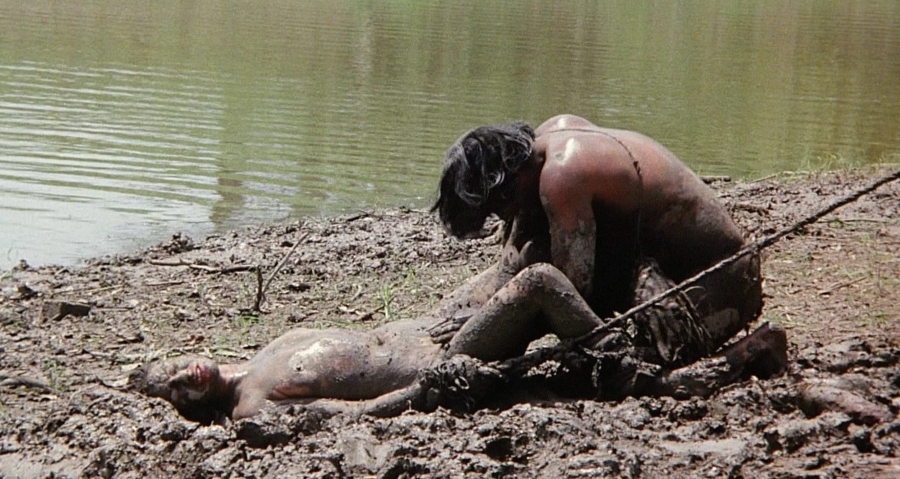
Further similarities are made once we arrive to the Amazon. None of these similarities are particularly difficult to notice. The clash of the two cultures, the soldiers and the cannibal tribes, is the easiest to decipher (darts/guns, animalistic/ordered, primitive/advanced) and their vicious actions are closely matched. Deodato's use of metaphor and analogy is not particularly new to anyone who has seen, for example, THE HILLS HAVE EYES, but the graphic depiction of brutality most certainly is.
This first half of the film contains the first use of actual violence in the film. Miguel, one of Prof. Monroe's guides, captures a small animal. In close-up, with the animal held tightly in the center of the frame, Miguel stabs and then slices open the neck of the terrified creature. A quick reaction shot shows the disgust of Prof. Monroe before returning to a close-up of the slowly dying animal. Once the animal has stopped squealing, the film returns to a medium wide shot, only returning to close-up when their Yacumo captive starts munching on the fresh innards of the animal.
This sequence provides the first glimpse of the Mondo tactics to come. Deodato stops the flow of his narrative dead in his tracks and breaks with his directorial scheme in order to bring us up close and personal to the death of a living animal. This is not only unethical but also unnecessary. If this were any other film (excepting, of course, the Mondo film) the moment of the animal's death would have been kept off screen. Prof. Monroe's pained reaction shot would have been triggered by the off-screen squeals of the animal. The scene would have then continued, cutting to Miguel tossing the animal innards to the captive Yacumo. End of scene. But Deodato films it. Why?
In keeping with the Mondo tradition, the inclusion of this graphic footage lends an air of credibility to the proceedings. It also shows the clear distinction between Prof. Monroe and his Yacumo guide. One will partake of the feast and one will not. But it is still unnecessary and is, in my opinion, a mistake on Deodato's part. Withholding the real carnage until reaching the Green Inferno would have been much better. The following scenes of horror we witness in this early sequence are all patently fake. The murder of an adulterer on the banks of the river, for example, might be disturbing to watch, but it is by no means convincing. Neither is the evisceration and cannibalization of several rival tribesmen. When compared to the Green Inferno footage, the footage here looks fake and feels fake. The killing of a single animal doesn't do much to change that.

All around Prof. Monroe is evidence of the four filmmakers and the troubles they have caused. At this point in the film, we have no idea who the filmmakers were beyond their names and reputations as documentarians. What we will come to learn is that these people are much, much worse than the natives they were seeking. Through a series of encounters and bargains, Prof. Monroe gains entrance to the native village and access to the film canisters left behind by the missing filmmakers. None of it required violence on their part or the unnecessary murder of innocent people. Prof. Monroe and his party are invited to witness a ritual sacrifice and to join in the feast, something Prof. Monroe reluctantly does. One civilization has encountered another without violent conquest. This stands in firm contrast to the near annihilation of a tribe by the lost filmmakers.
IV. THE LAST ROAD TO HELL
Once the footage has been returned to New York, Prof. Monroe is given the chance to view a film shot by the deceased filmmakers. It is a miniature Mondo film consisting mostly of newsreel footage taken in an unspecified country, though most likely an African country.
The film, entitled "The Last Road to Hell", runs for a little over a minute in real time, interrupted only by three cut-away insert shots of Prof. Monroe reacting to the violence on-screen. These three cut-aways are important in their placement. To understand this brief section of the film, you should really watch it play out. I'll provide a simple rundown in the following format:
SHOT #, RUN-TIME CODE, DESCRIPTION
Please note that the run-time code is taken from the unedited cut of CANNIBAL HOLOCAUST on the Grindhouse Releasing Region A DVD edition.
#1 (44.32) Men being executed by a firing squad (4 edits exists within the scene but none leave the scene)
#2 (44:47) Men laying out coffins.
#3 (44:51) Footage of a General reading a speech. While no subtitles are presented for this segment of the film, it's highly likely that this is meant to be a death sentence being read to the crowd as the speech continues through #8.
#4 (44:54) Two men are tied to poles awaiting the firing squad.
#5 (44:57) First cut-away to Prof. Monroe.
#6 (45:01) Soldiers marching in place.
#7 (45:02) Continued from #4, another shot of the two men tied to the poles.
#8 (45:05) Panning shot of a crowd standing behind a fence with soldiers before them.
#9 (45:07) Second cut-away.
#10 (45:09) Various people walking down a road. A corpse is lying in the middle of the road.
#11 (45:16) More people walking with a truck load of soldiers behind them.
#12 (45:19) A child is shot to death.
#13 (45:22) Third cut-away.
#14 (45:25) Burnt bodies being placed on blankets.
#15 (45:28) Panning shot of a road lined with corpses.
#16 (45:32) Soldiers leading two men away, their hands tied behind their backs.
#17 (45:36) Continued from #16, the two men are shown tied to poles.
#18 (45:37) Continued from #17, the two men are shown talking to the soldiers.
#19 (45:39) Continued from #18, one of the men has a large, black bag placed over his head.
#20 (45:40) Continued from #19, soldiers lining up for the firing line.
#21 (45:43) Continued from #20, shot of the man with the black bag over his head.
#22 (45:45) Continued from #21, soldiers firing their weapons.
#23 (45:47) Continued from #22, shot of one of the men dead.
#24 (45:49) Continued from #23, doctors checking on one of the men and confirming him dead.
#25 (45:52) Continued from #24, men tossing the dead bodies onto a truck.
#26 (45:53) Continued from #25, brief shot of the dead bodies in the back of the truck.
Film ends at 45:54.
There is no doubting the authenticity of most of this footage (though depending on the interview, Deodato staged all of it, some of it, or none of it). Of all the shots contained in this film, only #11 and #12 seem out of place. They are obviously taken from a completely different source. Not only is the film quality different but the people portrayed are not of the same ethnicity. The rest seems genuine.
The cut-away scenes are notable for their placement. The first is innocuous enough. But the second and the third indicate that Deodato is not yet ready to place us directly in harm’s way. The second cut-away conceals an execution. We only hear the gunfire on the soundtrack. We don't actually see the men being riddled with bullets. The third cut away is placed after the brief scene of the child being shot to death. This is the piece of film I am not entirely convinced by. Regardless, the sight of a child being shot to death is not something to be taken lightly and Deodato immediately yanks us out of the "verite reality" of the documentary and places us back within the comfortable "movie reality" of the screening room set. This is not something we will get much of in the third act of CANNIBAL HOLOCAUST.
This segment of the film puts the Mondo film in its proper perspective. The capitalizing on real life atrocities for personal gain or recognition was the Mondo films stock in trade and the filmmakers who worked in the Mondo film had no qualms about it. "The Last Road to Hell" adequately summarizes the entirety of the Mondo cycle. Notice the way this little film is edited, the way it focuses almost entirely on the act of violence being committed without any empathy or proper context. That is the core of the Mondo film.
Once the film is done, Prof. Monroe is told that the whole thing is a fake, a "put-on", and that the filmmakers had simply paid some soldiers to "do a bit of acting". This is troubling in its implications and returns to my earlier criticisms of Jacopetti and Prosperi. This dismissal of the film we have just seen as a put-on is never really explained.
What exactly was fake? Were the murders faked? If so, then Alan and his fellow filmmakers are total frauds and con men. If the murders were real but the situations they occurred in were fake (that is to say, staged for the camera), then Alan and his crew are not only frauds and con men but much, much worse.
V. TO FILM OR NOT TO FILM?
With regard to documentary filmmaking, where is the line drawn between morality and verite? Where do our boundaries lie?
If a documentary filmmaker films someone robbing a convenience store, is he too guilty of the crime? By watching it unfold, are WE somehow complicit? The average viewer would answer no to both questions but why? "Well, the filmmaker would be putting their own life at risk if they attempted to stop the robbery.” Fine, I will accept that. But what if the subject of the documentary was the one committing the robbery and the filmmaker was filming it for the sake of the film? Would he be more or less guilty given these circumstances? Any reasonable, moral person would have to answer yes, he would be more guilty. By not preventing the crime from taking place (a crime in which any number of things could have happened, even murder) or by not placing a call to the police, the filmmaker has become complicit in the crime and culpable to punishment. The only crime he would have committed by reporting or preventing the robbery is the crime of breaking the rules of verite.
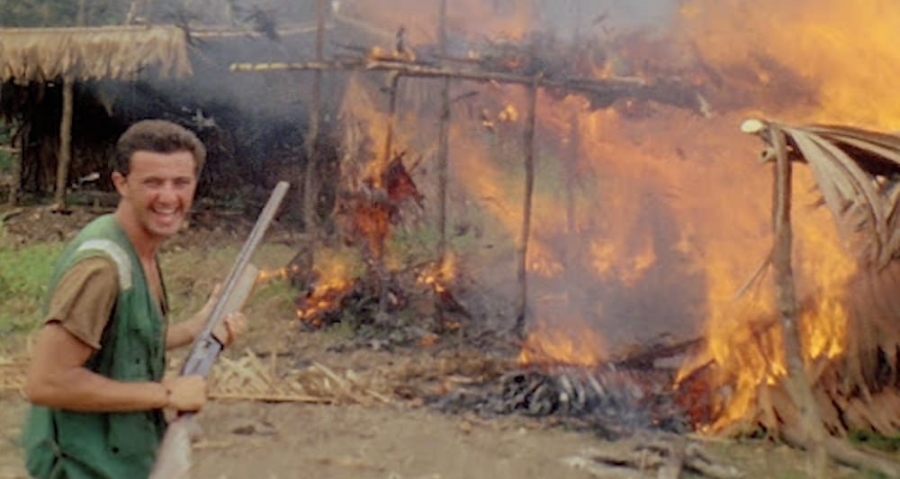
But I ask again are WE complicit in the crime by watching it without resistance? To a degree, I believe we are. Passively watching atrocities can be cathartic, even educational, but our rapt attention and eagerness to seek out "that which should not be seen" gives these films their raison d'etre. With regard to the Mondo film, that may seem especially unreasonable to most, but who were these films made for if not for an audience craving fresh shocks and horrors? Without an audience there would be no reason for these films to have proliferated as quickly as they did. Our bloodlust and morbid curiosity were the motivating forces. In some small way, we helped create them through our desire to see atrocities and our willingness to support those filmmakers making them.
That is not to say that we wished for hundreds of animals to be savaged and murdered, or for innocent people to have been treated in the same way. We are not guilty of committing murder, prostitution or rape. But audience demand was the driving force behind these films and the desire to earn a quick buck and a mention in the book of notoriety turned ordinary men into monstrous opportunists lining up to take the money we were so eager to give them.
VI. THE GREEN INFERNO
The third and final chapter of CANNIBAL HOLOCAUST is by far the strongest. In a weirdly horrible way, it is also the most entertaining. The culmination of Deodato's carefully exercised strategy, the final part of CANNIBAL HOLOCAUST, which I will refer to here as the “Green Inferno Footage", is nauseatingly powerful and, despite the shoddy effects and obvious visual tricks, incredibly convincing. The only weak link in this chapter is the acting, but the conviction of the direction and the unrelenting pace makes that bitter pill much easier to swallow. To this day, the Green Inferno Footage remains some of the strongest stuff produced in the Italian horror industry.
There is a brief prelude before we set down to watch the recovered footage. We see Prof. Monroe trying his best to interview the families and associates of our four deceased filmmakers. This lays out the dynamic of the relationship between the four. Alan is the ringleader, Faye is the desperate clinger, Jack suffers from hero worship and Mark is an enabler. They are called "prima donnas" that get "high ratings". They are little more than instruments of destruction masquerading as journalists. Their high energy and juvenile facade (evident when they pose at the airport with their guide Filipe and play keep-away with Faye's panties) masks a deep well of cruelty.

The brief piece of silent footage from aboard the plane is the only time we see the Green Inferno from the outside. It's the closest we get to an establishing shot of any kind. Once they set off into the jungle, we are trapped there with them. The thick jungle all around us confounds our sense of space. Everything looks the same. Everything feels the same. The sense of claustrophobia is overwhelming. Though the scenes in the Green Inferno are shot with two cameras (mostly from Jack and Mark's perspectives) it's difficult to tell who is shooting who, how the shots match from one to another and the timeline we are experiencing. There are no night time scenes in this final chapter of the film. Everything is set during the day. How long have we been in the jungle? How much of what we are seeing is from day one or day three? The whole last chapter of the film feels like one long, terrible fever dream.
No matter where we look, there is only death.
It's important to note that what we are seeing is edited footage compiled by a studio editor. As it stands, the new edit of the footage seems more like a greatest hits package than a true documentary. These four filmmakers would have brought miles of film with them, much more than what we are seeing. We are told, as a way of sewing up this plot hole, that much of the footage was ruined due to the environment and improper handling of the stock. What we see of the expedition is all that remains. And what we see is a true Mondo film.
VII. MONDO TACTICS
Everything we've seen so far has prepared us for a violent excursion into hell itself. CANNIBAL HOLOCAUST doesn't disappoint. Within the first ten minutes of the Green Inferno Footage, we witness two scenes of animal cruelty. The first, an almost innocent scene, is of Mark pinning a butterfly to a board. The second is much stronger.
The filmmakers pull a sea turtle out of the water. At first, the scene looks a bit like the hunting scene from NANOOK OF THE NORTH. It's not immediately obvious that the animal is alive at all. When they place it on the embankment, it becomes all too apparent that it is. Without a moment's hesitation, they chop the head off of the animal. Not content with showing this first graphic act, Deodato films, mostly in close-up, the complete dismemberment of the animal. Several of the actors have a hard time concealing their very real revulsion. Deodato pushes his cast through to the very end. They pry open the shell, revealing the soup of internal organs and Deodato films them, for no real purpose, playing around with the insides. The animal is cooked and eaten.
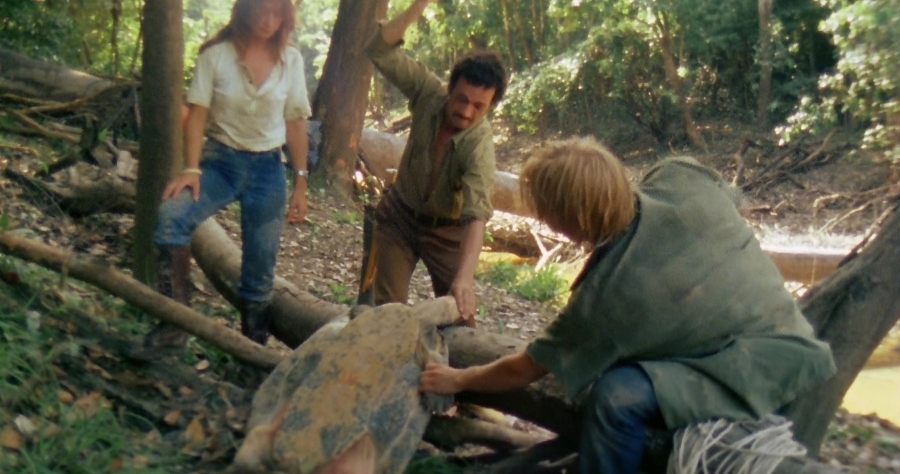
Jacopetti and Prosperi were disgusting opportunists who used staged scenes of animal slaughter to bolster the shock value of their films. For CANNIBAL HOLOCAUST, a film so openly critical of these kinds of filmmakers, to use the exact same techniques is a bit odd. It is also unavoidable. Faking the scenes of animal butchery would have been preferable but probably destructive. There would simply be no way of doing it convincingly. It is, I'll freely admit, completely hypocritical of Deodato to resort to using the exact same tactics that he is condemning, but it is essential to not only the strength of the film but to the point of the film as well. By showing this monstrosity, Deodato is laying bare the tactics of the Mondo filmmaker.
"This is how it is done”, he is telling us. "Are you not entertained?"
The following couple of scenes better illustrate the kind of people we are dealing with. When a large, possibly poisonous spider drops down onto Faye's shoulder, her companions stop to film her screaming before finally removing the spider and hacking it to pieces. Alan's expression before the cut says it all. His smirk, a mixture of sadism and sarcastic concern, speaks volumes. A little later, Filipe is bitten in the leg by a snake. They waste no time in severing his leg. Alan asks if they’re still filming. "Yeah, I'm getting it all," Jack replies. They place a hot machete against the wound to cauterize it, again all in close-up. Mark's expression before the cut recalls Alan's expression from the previous scene. The mutilation is what they're really concerned with. Saving Filipe's life is of secondary concern.
The opening scene of the next reel, the filmmakers crossing a river while a camen slowly approaches, is a standard issue scene from almost every wildlife survival show ever made. Utterly unconvincing, I'm not sure this scene was intended by the filmmakers to represent reality at all. It looks constructed to spice things up a bit, an attempt to sell themselves to the audience as adventurers. They stumble across a group of Yacumo slaughtering a few tree monkeys. In close-up, a Yacumo severs the top of a monkey's head with a blade then feasts on the warm brains. The filmmakers watch from a distance. Jack shoots one of them in the leg so they can follow him back to his village. When they arrive, one of the major atrocities - though faked - of CANNIBAL HOLOCAUST occurs.
The filmmakers arrive in the village. If we expected savages, we are sorely mistaken. The Yacumo village is full of women tending to babies, children playing games, and men huddled in groups. No one raises a hand against the four Caucasians in their midst. They are completely docile, struck by the sudden appearance of the filmmakers. The filmmakers wander through the village and come across a pig tied to a stick. Mark shoots it in the head, prompting Alan to remark that "Things like this happen all the time in the jungle! It's survival of the fittest! In the jungle, it's the daily violence of the strong overcoming the weak!"
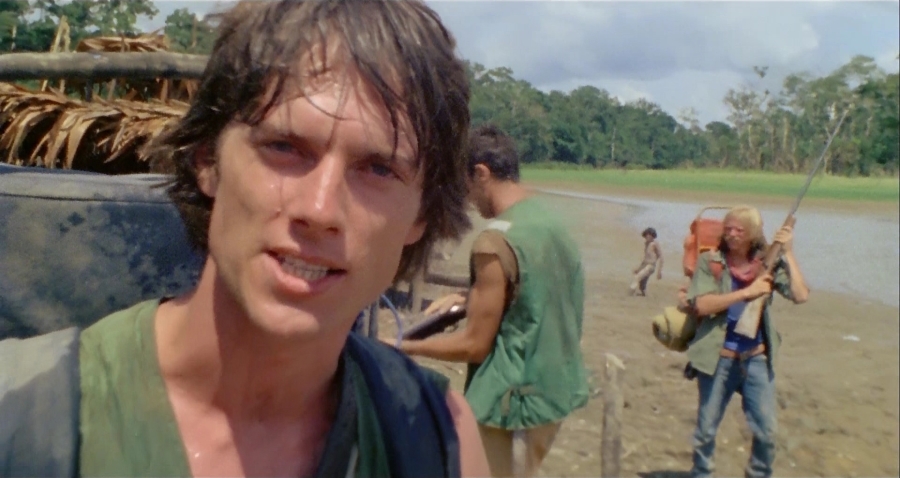
Of course death happens all the time in the jungle, as it does all over the world. But not this kind of death. Not in this kind of way. Not for the benefit of entertainment.
Alan and company round up all the Yacumo they can into huts and set the huts on fire. As the terrified Yacumo try to escape, they are forced back into the flames. All the while, Riz Ortolani's beautiful, majestic score plays in the background. The filmmakers stand and watch the fires rise. "Just like Cambodia", one of them says as the lush, romantic theme soars on the soundtrack. Once the fires have gone out, Alan and Faye have sex while the remaining Yacumo sit huddled in the background. What is normally a tender scene is perverted by the setting.
With this, the first stretch of the Green Inferno Footage comes to an end.
VIII. IS IT REAL OR IS IT MEMOREX?
Reality television seemed like a respectable new medium. We were familiar with hearing people tell stories about their lives on talk shows. Now we were watching all of the drama, joy and heartache happening right in front of us. The Real World, the original docudrama that started the whole phenomenon, debuted on MTV in 1992. It seemed to be a genuinely interesting bit of social experimentation. A group of people, all from different backgrounds and economic classes, were stuck together under one roof and left to their own devices. We were told that it was real, that it was genuine. It didn’t occur to many people that the episodes were carefully edited, that situations were being contrived in writer’s room meetings in the hopes of maximizing conflict between cast members. It turned out that reality television, this new avenue of documentary, was no more about “reality” than the Mondo film. Sure, what we were seeing on screen actually happened but the context is unclear. The steps from “passive” to “aggressive” were missing. This wasn’t really “reality” at all. This was “television reality”.
As the series progressed, it became apparent that what people wanted to see was not the personalities of the people on the show but the inevitable conflicts between them. Casting came down to color, politics, sexuality and gender identity. The mixed cast of subsequent Real World shows included people from nearly every spectrum of the human experience. But that was not for the benefit of audience identification. It was for the benefit of the drama. Situations were created that pushed political/religious/economically opposed characters (and yes, I am referring to the cast of these shows as characters as their on screen identity is constructed through editing and, more often, play acting by the cast member) into conflict. As the world of reality television expanded, an ongoing battle between the networks was stirred up. Reality television quickly became the realm of crass exploitation and navel gazing gawking. There is no humanity left on these shows. What we are watching is people at their worst.
People at their best just doesn’t sell.
IX. RAPE OF THE SENSES
“Today, people want sensationalism. The more you rape their senses, the happier they are".
The line I quoted above is spoken by a television producer as she and Prof. Monroe sit outside the studio building. It strikes him (as it does us) as a bit of a "no shit" observation. It's been that way since the advent of film, worse since the invention of the television and even worse still since the invention of the internet. Take a look at a gossip magazine or celebrity focused website. Notice the way they delight in every sordid detail. Notice the way drug abuse and sexual abuse is turned into attention grabbing headlines. Browse through a newspaper or watch any television news broadcast. Compare the air time or print space given to a murder versus the air time or print space given to a humanitarian event. When some psychopath shoots up a school, pay attention to how every single detail about the killer, from their clothing to their motive to the ammunition they used, is turned into sensationalized information repeated over and over in a way that almost borders on fetishism.
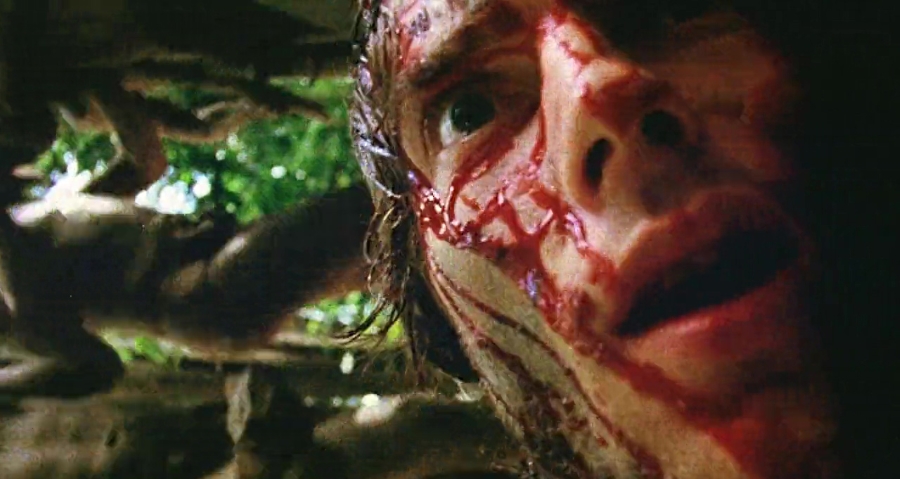
I often wonder how long it will be until we begin to see the pictures of shattered bodies and disembodied limbs strewn around the wreckage of the World Trade Center. Maybe in another ten years when people stop being affected by the images of the smoking Towers. It used to be that the film of Kennedy’s assassination was kept from public view. Now it is instantly recognizable. It pops up on television shows and in big budget movies, slowed down, sped up, enlarged, over-dubbed, played in slow motion and played in reverse. I remember seeing that footage on television for the first time when I was a child. I was utterly shocked. Though I was not alive when Kennedy died, I was well enough aware of John F. Kennedy to know that he was a man deserving of respect. Now, the footage of his death is so commonly used and displayed that the shock has been all but eliminated. The final moments of a President of the United States of America has been reduced to simple stock footage.
The crudely dismissive comments made by the television producer are indicative of our modern media. That is one of the problems with having a 24-hour news cycle. How do you keep people tuning in? With so many news avenues available both online and off, what can you do to ensure an audience?
Give them blood. Give them misery. Give them horrors and terrors and tragedies and outrage. Keep them scared. Keep them believing that tuning in is a safety measure. It's just that simple.
But the final line of this interlude, spoken by Prof. Monroe, reveals the immorality behind the media's practices and our own blood lust.
"Would you like people to make money off your misery?"
X. SOCIAL SURGERY AND A FINAL WARNING
When we return to the jungle, we see Alan and his crew taking a bit of a break. They are shooting simple b-roll footage as Faye puts the spin on their earlier encounter with the Yacumo. She refers to their savagery as "establishing... diplomatic relations" with them. We see Mark enjoying a quick shave as an old woman dies nearby. As Faye chokes over her lines, gagging from the sight and smell of the rotting woman, Alan grabs the mic and directs the attention of the camera to the rotting pile of flesh. What he says will ultimately come true for them in a few short hours. "In the jungle, nothing goes to waste. Nature recycles everything".
The crew next stumbles upon a gruesome scene. Several of the tribeswomen have bound a pregnant woman by her wrists. Alan describes what we are about to see as a necessary procedure, a kind of "social surgery". In order to eliminate illness from the tribe, any diseased or sick member is killed. In a moment of childish shock mongering, the women pull the fetus from the sick woman's womb (the act, though not the total outcome, would be replayed in Joe D'Amato's ANTHROPOPHAGUS a year later). One of the women buries the fetus in the mud while the others beat the bound woman to death with stones. Survival of the tribe is of greater concern than the survival of a single woman and her unborn child.
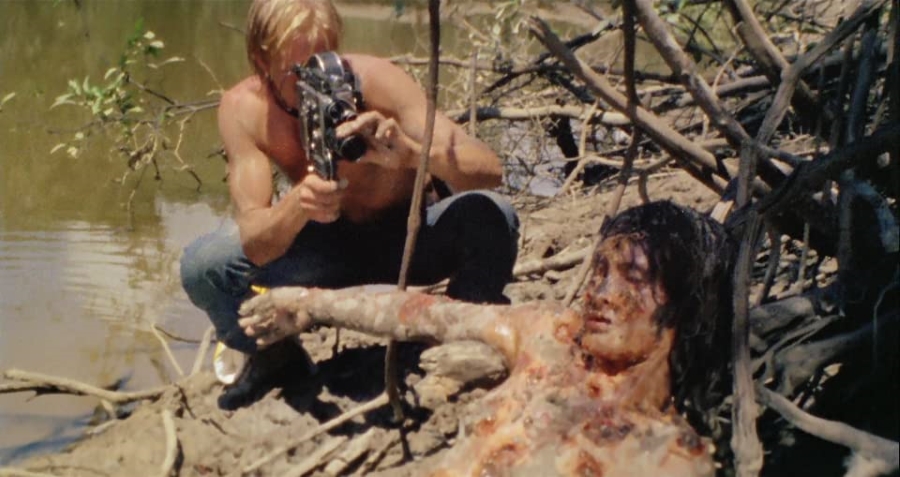
Following this disgusting display, we find Alan and crew resting in the jungle. Alan briefly discusses the arguments going on behind the scenes. The crew wants to turn back but Alan has other plans. He wants to press on. He says that what convinced them to continue is the "chance to become famous". Nothing else matters to him and as a result they continue on to their doom.
Deodato takes us out of the jungle at this point and back to New York where Prof. Monroe is firmly stating to the television producers his intentions to walk away from the documentary. Realizing the travesty they want to distribute, he declares that he wants nothing to do with it. The female producer simply can't believe that Monroe would want the company to shelve the footage. "Yes, yes, we all know what Alan was like", she says, "He over-did it as usual but what you saw was a rough cut". In other words, it has yet to be sanitized and re-focused. Alan and his crew have yet to be made into heroes by the editors. The “truth” was not yet ready for primetime.
Prof. Monroe doesn't care about "the most sensational documentary to come along in years", only the truth and he is all too aware of the horrors yet to come. He is the only one to have seen the remaining footage. His statement, that they have not yet seen the stuff that their "editors didn't even have the stomach to put together", is their final warning of the graphic horrors that are about to behold. It's our final warning, as well. For the next ten minutes, we will be placed squarely in hell with nary an edit between us and the horrible fates of the film crew.
XI. THE FINAL REELS
As the television producers and Prof. Monroe settle in, the final reels begin.
The crew captures a young girl. Alan remarks that they have finally caught a member of the Yanomamo tribe, the elusive cannibals they have been hunting down. As the young girl fights her way out of Mark's stranglehold, we hear Alan say that they "have to be careful because these people are known for their cruelty". We know that the people they are speaking of are the same people we saw at the very beginning of the film. We have seen with Prof. Monroe who these people are and what they are capable of. From our previous experience, we can guess the ramifications of their actions.
They begin to rape the girl, one at a time. Faye disapproves but not necessarily of the rape. Rather, she screams about them filming it. "We can't use this," she screams. It's only when Alan takes his turn that Faye makes any attempts to stop the rape. Once the rape has been completed, we cut back to the screening room for a reel change. We don't learn of the fate of the raped girl but through a quick cut, we are made aware that they were being watched the whole time.
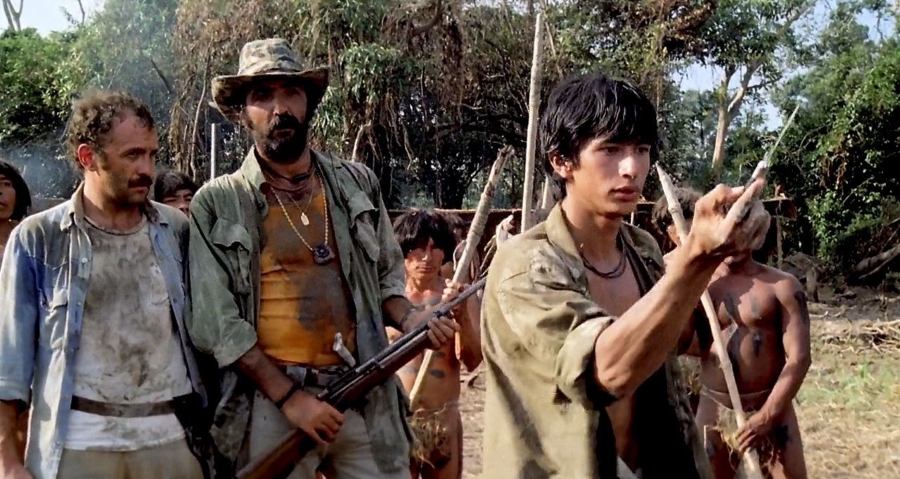
When we return to the jungle, we find our crew has stumbled upon a horrific sight. A young girl has been piked by the riverside, the length of wood penetrating her vagina and exiting through her mouth. As Mark and Jack swirl around with their cameras, an excited Alan eyes up the atrocity with a smile on his face. He has to be reminded that he is on camera - "Watch it, Alan, I'm filming" - and then immediately launches into performative disgust. "I can't understand the reason for such cruelty", he says before remarking about the "almost profound respect these primitives have for virginity". Alan shakes his head in false disbelief but it's Faye who seems to have a firm grasp on the reality of the situation. The look she gives Alan before the cut says it all.
* Some people have speculated that the girl on the pike is not only the girl who was raped by the crew but that Alan and company were the ones responsible for her fate. The film gives no evidence for this and it seems hardly likely given the way they discover the girl's body and the reactions of the filmmakers *
The next series of scenes details the demise of the filmmakers. Realizing they are surrounded, with tribal warriors pouring out of the thick jungle and spears flying through the air, we can hear someone scream "Keep rolling! We're gonna get an Oscar for this!" Jack is speared and Alan, in his only moment of empathy during the entire picture, shoots him dead. The filmmakers scramble away. The film pops and cracks.
Mark is now filming through the trees as the tribe castrates and disembowels Jack's corpse. The cannibals almost immediately begin feasting, hoisting their moist treasures in the air in celebration. The impulse to film has completely overtaken the impulse to survive.
When we cut away to Alan, Faye and Mark in the woods, Alan recognizes that they probably aided in their own demise by stopping to film Jack being devoured. The cannibals rush them again and take Faye. For the first time, we see Alan beginning to panic. The film pops and cracks.
Once again, we are watching the cannibals through the trees. They strip Faye of her clothing and one of the men rapes her. They carry her to a small clearing before raping her again. Once the rape is over, the women beat her to death with sticks. As they beat her lifeless body, Ortolani's lush score begins to play, shifting the entire tone with it. The sudden reversal of the score from the beautiful ballad back to the disturbing synth score provides the typical jump-cut shock when the natives suddenly lift her disembodied head high in the air.
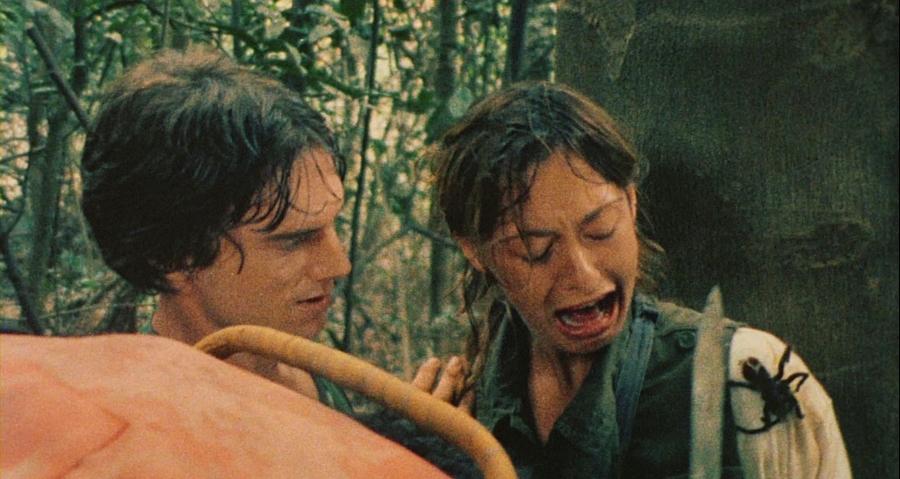
The camera whirls. In a flash, we are overtaken by the cannibals. Spears are jabbed directly at us. The camera tilts and falls. The final image from the Green Inferno Footage is the bloodied face of Alan, his eyes slowly closing as he is beaten around the head. The film pops, cracks and stops.
The lights come on in the screening room. It is silent. One of the producers gets up and leaves. Another makes his way to a telephone. He tells the projectionist to burn the film. For once, decency and responsibility win out. Prof. Monroe wanders outside. He is framed from below, the skyscrapers looming large behind him. He lights his pipe. His voice-over is the last line of dialog we hear in the picture. "I wonder who the real cannibals are?"
The answer is simple and obvious. We are. Each and every one of us.
XII. FINAL THOUGHTS
Unlike many of the so-called Video Nasties and hardcore horrors of days long past, CANNIBAL HOLOCAUST deserves its reputation. It's a tough film but an important one. It not only perfectly encapsulates the artistic environment it was made in but critiques it as well. CANNIBAL HOLOCAUST strikes so hard because it lays bare all the conventions and manipulations of the medium. It is the purest example of exploitation cinema. It knows what it's doing and shows you the rules of the game every step of the way.
Despite all the stage blood, faked rape, real animal slaughter and misanthropy, it remains a beautiful picture. It is expertly filmed and visually exciting. I've spent many years watching films and television shows set in the jungle but have never actually felt like I was there before I saw CANNIBAL HOLOCAUST. The authenticity of the setting is conveyed magnificently. You can smell the humidity in the air. The sense of claustrophobia the film creates is disarming. If you feel like you need a shower once it's over, I wouldn't be surprised.
I've struggled with CANNIBAL HOLOCAUST for many years. It is a film I genuinely love and that fact bothers me a great deal. Because this isn't a film you, me or anyone else should love. As much as it disgusts me at times and as much as it makes me want to curl up in a ball and cry for hours, CANNIBAL HOLOCAUST remains for me an almost perfect film and a true testament to the power of cinema. Those people who view horror cinema as a lesser art form or as a cheap, pathetic entertainment for the mentally challenged would do well to watch this film. It might go a long way toward changing their minds. If they can stomach it, that is.
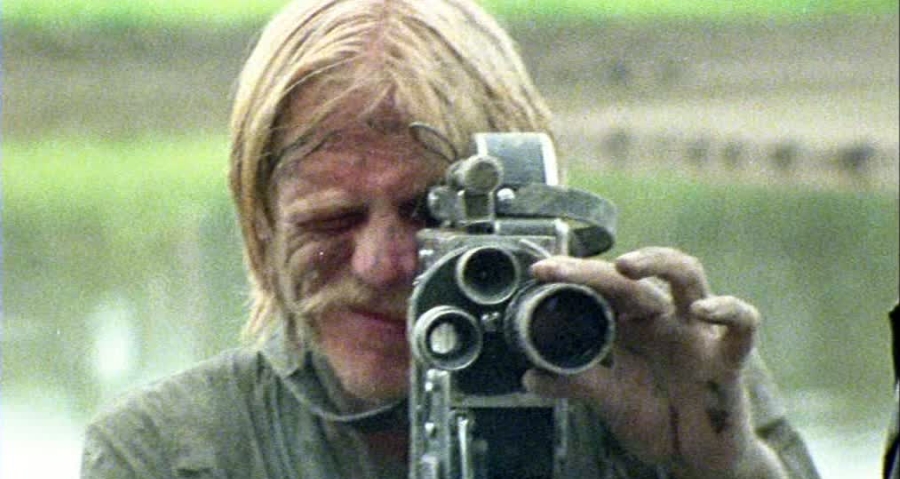
Marshall McLuhen once wrote that “the medium is the message” and lamented the fact that people only tend to focus on the obvious content of media rather than on the way media effects society and fosters change. For Deodato, the exploitative nature of media (not just the Mondo films; Deodato frequently mentions being shocked by the way television broadcasts would show, during early evening hours, the destroyed bodies of soldiers fighting in war) is a self perpetuating machine. By giving an audience to atrocities, we create further atrocities. Like VIDEODROME and MAN BITES DOG, CANNIBAL HOLOCAUST explores the nastier side of supply and demand that exists in horror cinema in general and documentary film in particular. The effect of this particular kind of exploitation cinema is that we become too immune to shock too quickly. In order to recapture our sense of horror, we must push further into darker territory. We are constantly reinventing the boundaries of good taste in order to satisfy our bloody curiosities.
I mentioned that CANNIBAL HOLOCAUST comes off as a bit hypocritical at times, that it uses the same techniques that the Mondo filmmakers were using. That is an inescapable criticism leveled at it and one that the film cannot worm its way out from under. But what Deodato has done with this film is provide a valuable service. Like SALO: THE 120 DAYS OF SODOM, the real meaning of CANNIBAL HOLOCAUST is often obscured by the vicious and nasty content it contains, but it succeeds in doing precisely what it sets out to do. It exposes the exploitative nature of cinema. It pulls back the veil and shows us how the Mondo filmmakers (and by extension, today’s news media and television programmers) manipulated and exploited not only their audience but the subjects of their films. We’re far more media savvy today than we were in 1980. Nothing this film has to say will strike the majority of today’s moviegoers as profound, but it is still surprising that one of the most striking pieces of media criticism was made under the guise of a gut munching cannibal exploitation film.